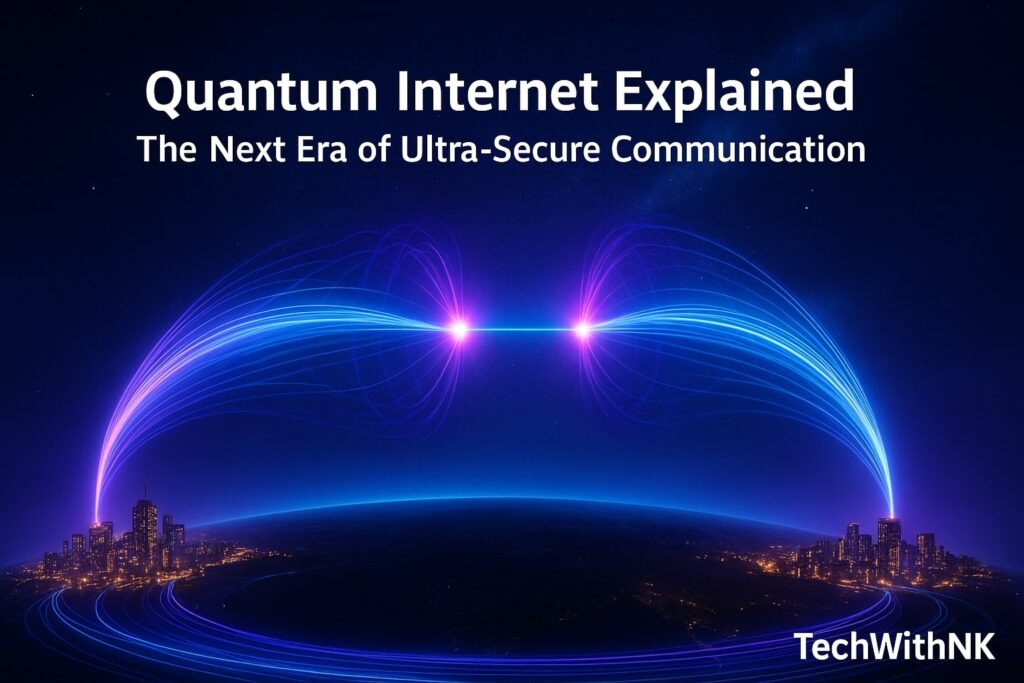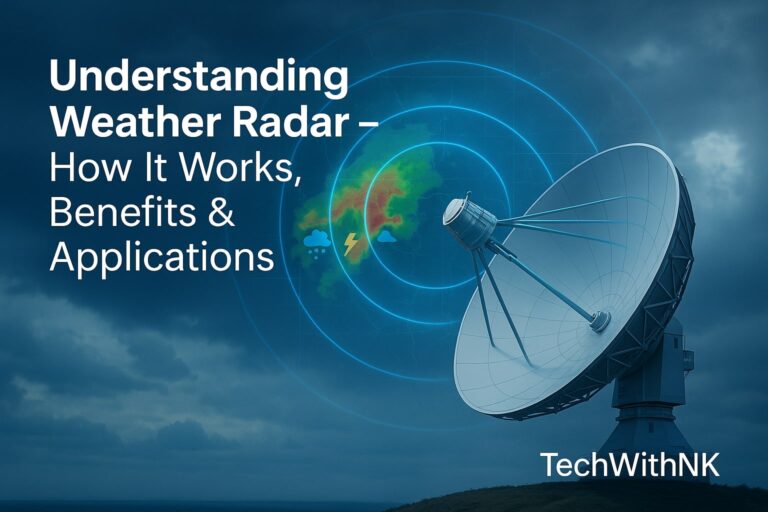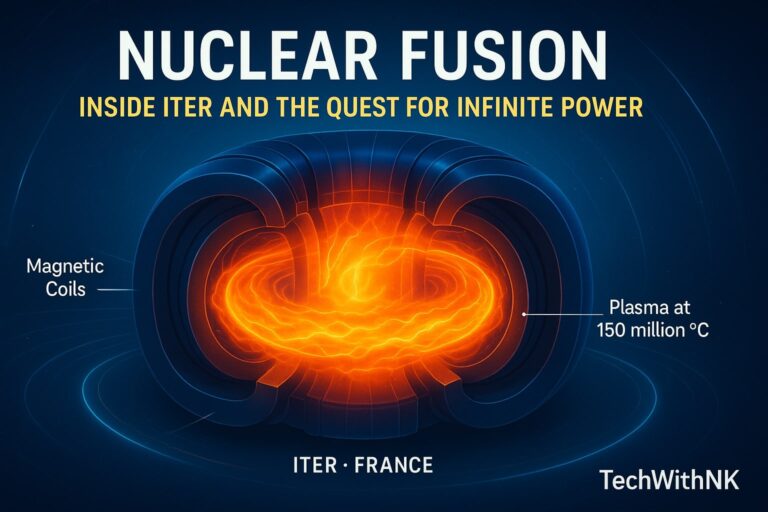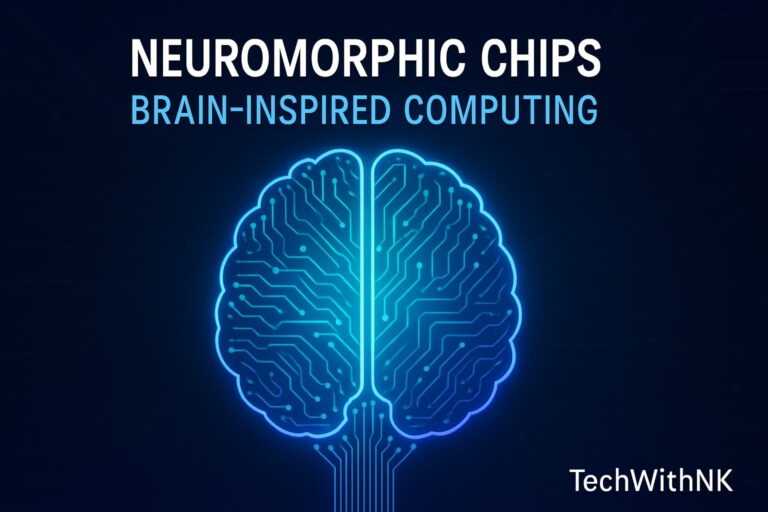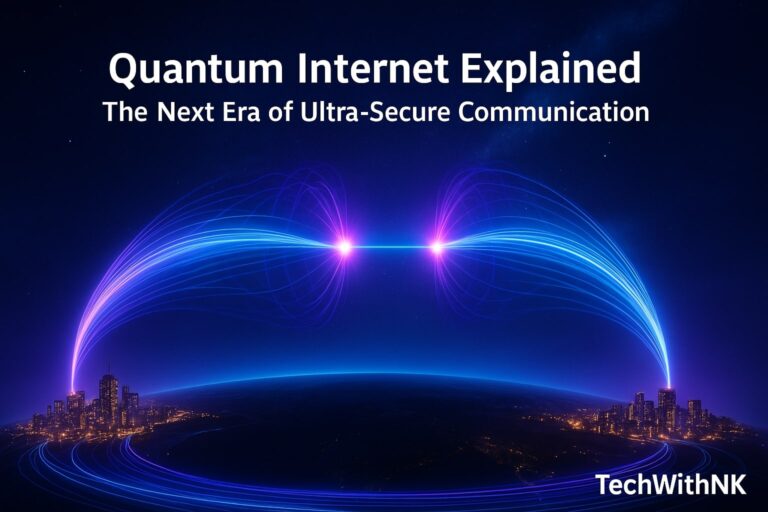🌐 1. Introduction – Entering the Quantum Communication Era
The Internet revolutionized human communication, connecting billions through a network of bits — zeros and ones. But as digital dependency grows, cybersecurity threats and data breaches have exposed a critical flaw in classical networks: they can always be hacked in principle.
Now, a new frontier is emerging — the Quantum Internet — a communication network built not on classical bits but on quantum bits (qubits) and the strange, powerful laws of quantum mechanics. This next-generation network promises something previously impossible: unhackable communication.
Imagine sending sensitive data — government codes, financial transactions, or even personal medical records — that no hacker can intercept or copy. That’s the vision driving the world’s largest scientific and technological race — the quest to build a global Quantum Internet.
⚛️ 2. Understanding the Basics – From Classical Bits to Qubits
Before diving into how quantum networks work, let’s revisit the foundations of information theory.
2.1 Classical Bits
The Internet today uses classical bits — either 0 or 1 — transmitted through copper, fiber, or radio waves. Every email, video, or chat is a series of billions of such bits. Classical data can be copied, intercepted, and measured easily.
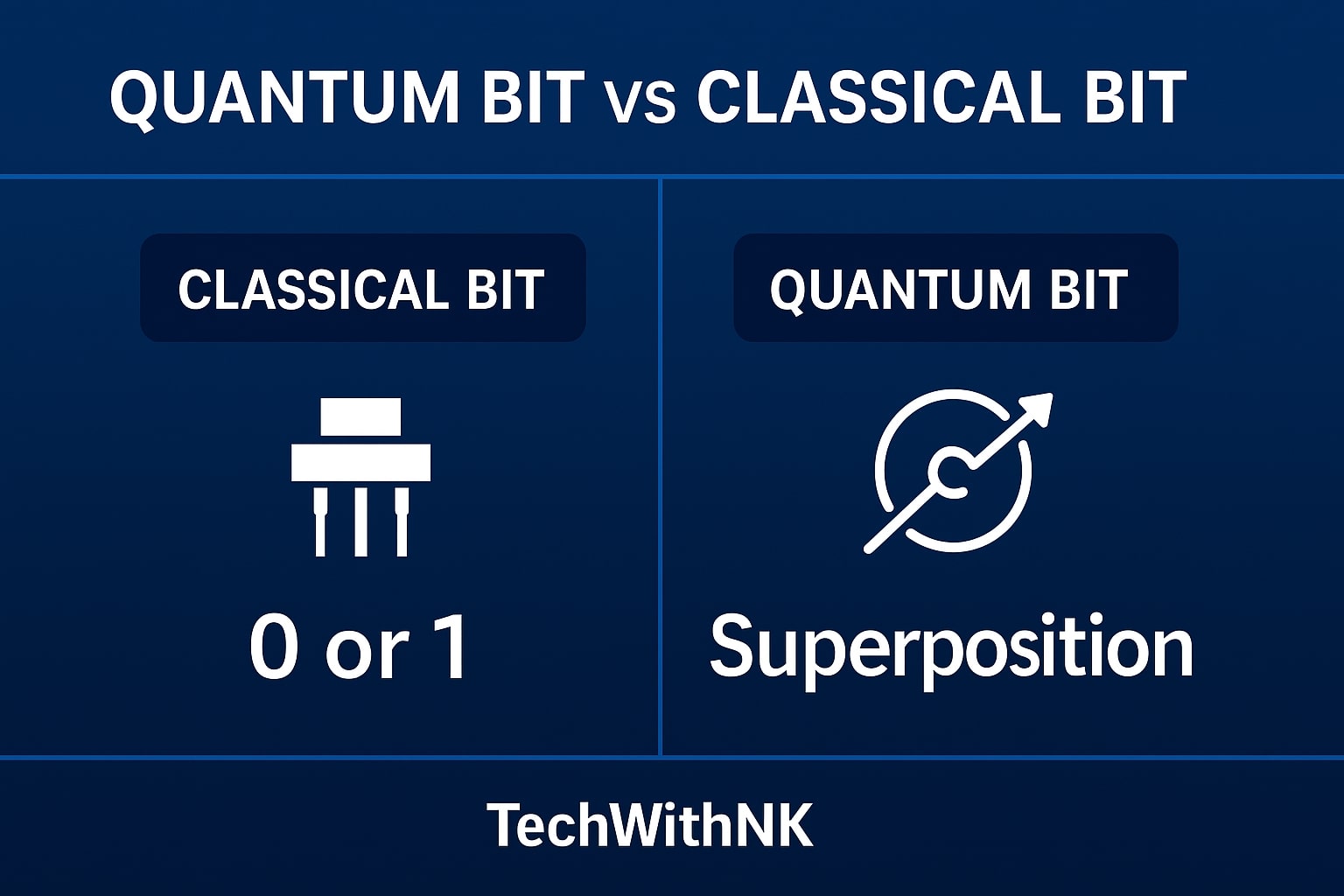
2.2 Quantum Bits (Qubits)
In the quantum world, particles like photons or electrons can exist in multiple states at once — this property is called superposition.
A qubit can be both
0and1simultaneously until measured.Measuring it collapses its state, giving a definite result.
2.3 Quantum Entanglement
Another key concept is entanglement — when two particles become correlated so deeply that the state of one instantly affects the other, no matter how far apart they are.
Einstein famously called this “spooky action at a distance.”
In a quantum network, entangled photons act as invisible, synchronized messengers. Measuring one immediately reveals the state of its partner — enabling instant coordination without direct transmission of information.
2.4 Quantum Superposition + Entanglement = Quantum Internet
The Quantum Internet harnesses both superposition and entanglement to enable:
Ultra-secure encryption
Instant synchronization
Quantum teleportation of information
🔒 3. Why We Need the Quantum Internet
3.1 The Cybersecurity Crisis
Today’s encryption systems — like RSA or AES — depend on mathematical complexity. A hacker must solve enormous equations to break them, which is practically impossible for classical computers.
However, Quantum Computers could soon perform these calculations exponentially faster, rendering classical encryption obsolete.
3.2 Quantum Solution: Physics-Based Security
Quantum communication doesn’t rely on mathematical secrecy but on the laws of physics.
In quantum systems, any eavesdropping attempt alters the quantum state — instantly alerting the sender and receiver.
Thus, the Quantum Internet offers intrinsic, tamper-proof security.
3.3 Future Applications
Banking and finance: Secure transfer of transactions and authentication.
Government and defense: Quantum-secure communication channels.
Cloud computing: Secure quantum cloud storage and computation.
IoT & critical infrastructure: Tamper-resistant command channels.
🧩 4. How the Quantum Internet Works
4.1 Quantum Key Distribution (QKD)
QKD is the backbone of quantum communication. It uses photons to transmit cryptographic keys that are:
Randomly generated,
Impossible to clone (due to the no-cloning theorem),
Automatically destroyed if intercepted.
The most common protocol, BB84, allows two users (Alice and Bob) to establish a secret key using quantum states of photons.
If a hacker (Eve) tries to intercept, she disturbs the quantum state, and both users detect the intrusion.
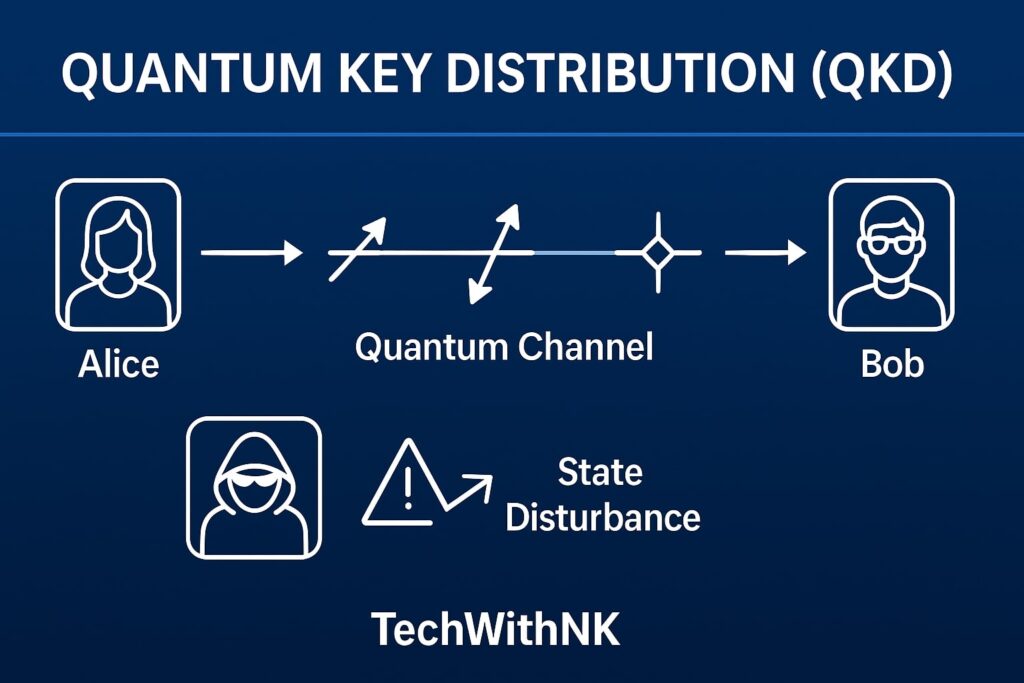
4.2 Quantum Teleportation
Quantum teleportation doesn’t mean moving matter instantaneously. Instead, it transfers quantum states using entanglement and classical communication channels.
This allows instant synchronization between distant nodes without physical transfer of photons.
4.3 Quantum Repeaters
Photons are fragile; they can lose coherence (get “decohered”) after traveling long distances.
To extend range, scientists use quantum repeaters — specialized nodes that store and retransmit entangled states without measurement.
These repeaters are crucial to scale local quantum links into a global quantum network.
4.4 Entanglement Distribution Network
The full architecture involves:
Quantum nodes – devices that generate or measure entangled photons.
Quantum channels – fiber optics or satellite beams transmitting photons.
Classical channels – traditional Internet paths for coordination and control.
Quantum memories – systems that store entangled states temporarily.
🌍 5. Quantum Internet vs. Classical Internet
| Feature | Classical Internet | Quantum Internet |
|---|---|---|
| Data Unit | Bit (0 or 1) | Qubit (superposition) |
| Transmission | Electrical/optical signals | Entangled photons |
| Security | Mathematical encryption | Physics-based (quantum laws) |
| Copying Data | Possible | Impossible (no-cloning) |
| Eavesdropping | Undetectable | Instantly detectable |
| Speed | Limited by bandwidth | Potentially faster (quantum teleportation) |
| Infrastructure | Fiber & satellites | Quantum channels & repeaters |
🛰️ 6. Global Quantum Internet Projects
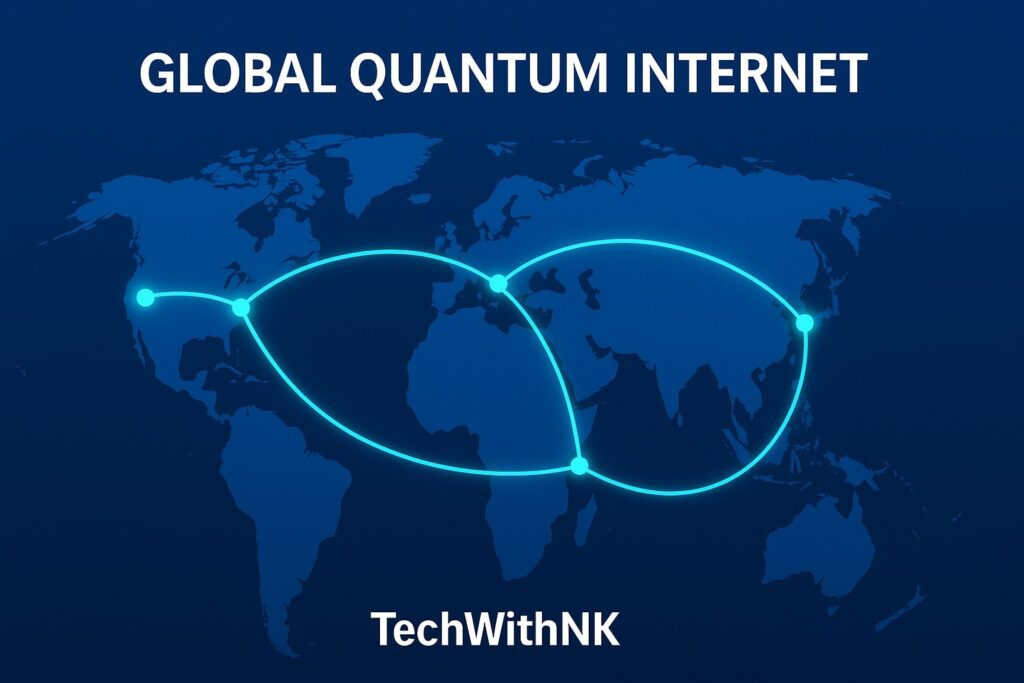
China’s Quantum Leap
China is the undisputed leader today.
Micius Satellite (launched 2016) enabled satellite-based QKD between Beijing and Vienna — the world’s first intercontinental quantum-encrypted video call.
Beijing-Shanghai Quantum Backbone spans 2,000 km of fiber, linking banks and government centers.
Europe’s Quantum Flagship
The EU’s €1 billion Quantum Flagship program includes EuroQCI (Quantum Communication Infrastructure) — aiming to connect all member states with quantum-secure networks by 2030.
The United States
Projects like the Chicago Quantum Exchange (CQE) and DARPA’s Quantum Network Program are building metropolitan-scale testbeds, linking universities and labs via quantum fiber networks.
India’s Quantum Mission
India launched its National Quantum Mission (NQM) in 2023 with ₹6,000 crore investment.
Key goals:
Develop secure quantum communication links between DRDO, ISRO, and research institutions.
Deploy QKD-based networks between Delhi and Mumbai.
Support quantum startups and photonic research.
🧮 7. Components of a Quantum Network
| Component | Description | Example |
|---|---|---|
| Qubit Source | Generates photons/electrons with defined quantum states | Laser-based photon emitters |
| Quantum Memory | Stores qubits temporarily | Cold atoms, trapped ions |
| Quantum Repeater | Extends transmission distance | Entanglement swapping nodes |
| Quantum Channel | Medium for qubit transfer | Optical fiber or satellite |
| Quantum Modem | Interface between quantum & classical networks | NV-center chips, photonic circuits |
🔬 8. Key Technologies Powering Quantum Internet
8.1 Photonic Chips
Integrated photonic circuits can generate, guide, and detect single photons on-chip — essential for scalable quantum communication.
8.2 Quantum Cryptography
QKD protocols like BB84, E91, and Continuous-Variable QKD (CV-QKD) are being standardized globally.
8.3 Quantum Repeaters & Memories
Researchers are developing quantum memories using atomic ensembles, rare-earth crystals, and superconducting qubits to store entangled photons for milliseconds — enough for synchronization.
8.4 Satellite-Based Quantum Links
Satellites can bypass fiber-loss limitations and connect continents via free-space optical channels.
The future network will blend ground fiber QKD with space-based entanglement links.
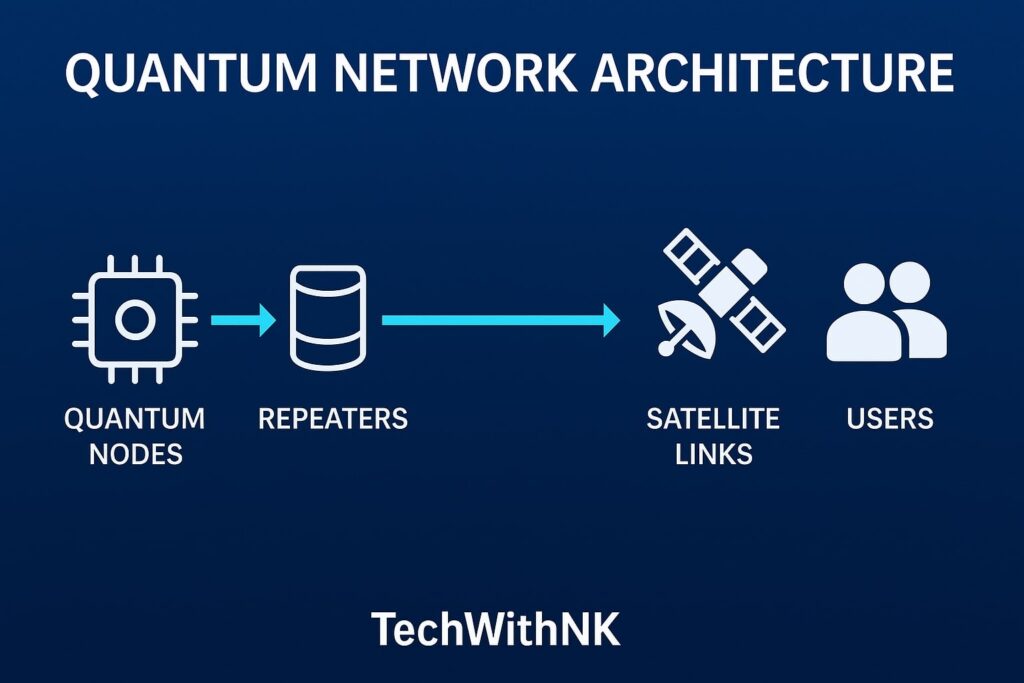
🧠 9. Real-World Applications
9.1 Unhackable Banking & Finance
Banks can use QKD for secure inter-branch communication, ensuring transaction data cannot be copied or decoded by hackers.
9.2 Military & Government Security
Quantum networks can secure command, control, and intelligence systems, where even minor leaks are catastrophic.
9.3 Quantum Cloud Computing
By connecting quantum computers over quantum networks, researchers can create a distributed quantum computing cloud, pooling processing power securely.
9.4 Smart Cities & IoT
Quantum Internet will protect smart grids, autonomous vehicles, and industrial IoT systems from cyber attacks through secure authentication.
9.5 Healthcare & Privacy
Quantum-secured telemedicine ensures patient data remains private even against future quantum attacks.
⚙️ 10. Challenges in Building the Quantum Internet
10.1 Decoherence and Photon Loss
Quantum states are extremely fragile; noise, heat, or electromagnetic interference can destroy them in microseconds.
10.2 Infrastructure Cost
Quantum hardware (photon sources, cryogenic systems, quantum memories) remains expensive and complex to scale.
10.3 Standardization
Different nations use varying protocols. Global standards for QKD, network architecture, and interoperability are still evolving.
10.4 Distance Limitations
Even the best fibers lose photons over 100 km; quantum repeaters and satellite links are essential but still experimental.
10.5 Skilled Workforce
Quantum engineers, photonic specialists, and cryptographers are in short supply — education and collaboration are crucial.
🚀 11. The Future – From Quantum Links to Quantum Internet
11.1 Hybrid Classical-Quantum Networks
In the coming decade, the Internet will be hybrid: classical channels for general traffic and quantum channels for high-security layers.
11.2 Towards Quantum Cloud
By 2035, quantum computers could be interconnected globally — performing distributed quantum computation in real time.
11.3 India’s Roadmap
2025: Metro-scale quantum communication between key cities.
2030: Satellite-based quantum link via ISRO.
2035: Nationwide quantum-secure government backbone.
11.4 Global Collaboration
Just as ARPANET evolved into the Internet, isolated quantum testbeds will merge into a global quantum web — enabling instant, tamper-proof communication across continents.
🌈 12. Conclusion – The Dawn of a New Internet
The Quantum Internet represents more than a faster network — it’s a fundamental shift in how we transmit and protect information.
For the first time, security won’t depend on algorithms or passwords but on nature’s most unbreakable laws.
While challenges remain — cost, scalability, and standardization — the progress is undeniable.
From Micius Satellite to India’s Quantum Mission, humanity is moving steadily toward a world where every message, transaction, and command is quantum-secured.
In this new era, privacy will no longer be a luxury — it will be a law of physics.
What is the Quantum Internet?
A network that transmits data using quantum particles (like photons) to achieve ultra-secure communication.
How is it different from the regular Internet?
It uses qubits instead of bits, making interception or copying impossible due to quantum laws.
What is Quantum Key Distribution (QKD)?
A method of securely exchanging encryption keys using photons whose states change if intercepted.
